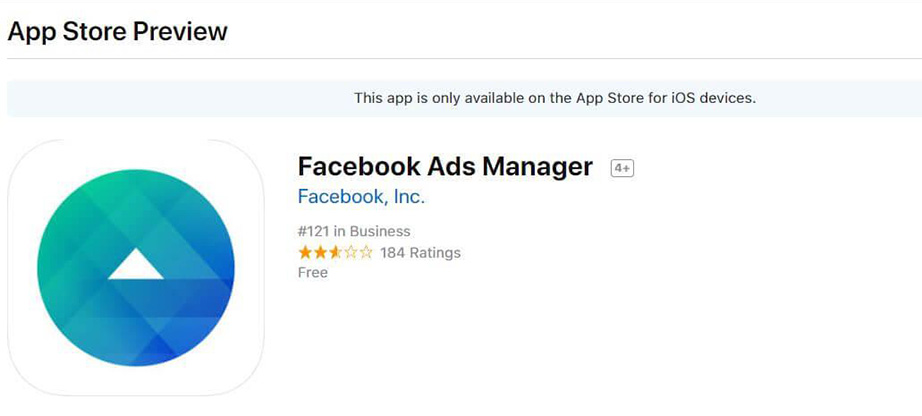Cross Platform App Development – 13 Benefits
Let us talk about a common concept in mobile app building, cross platform app development. In today’s digital world there are a number of devices functioning with a variety of operating systems. In order to reach a bigger audience, the app developers have to target all of these different platforms. This means creating a mobile app that can cater to each operating system which is not a simple task. It requires to create the same app multiple times with different tools and technologies. Mobile applications are either pre-downloaded in a phone or downloadable via the operating system. Whichever way the app is downloaded, it demands a lot of money, hard work and time.
This can be specifically more difficult for new developers who have limited resources. It is where the concept of cross platform development comes in. As evident from the name, cross platform development refers to the development of mobile apps that can work across multiple mobile platforms. It is not a completely new or unknown concept though. A similar concept has been there in software development for quite a long time now.
In recent years, the cross platform app development has gained much popularity. It offers a very convenient way for the developer to write the code only once. They can then use it across different platforms such as Android, iOS or Windows.
Benefits of Cross Platform App Development

The high demand for cross platform app development is due to the fact that all business owners want to cater to a large customer base. Cross platform apps fulfill this need of the businesses by being available to all customers on different platforms. In this article below, we have reviewed 13 benefits of cross platform app development and how you can make it work.
One Code for All
With cross platform app development, developers do not have to design separate codes for different platforms. What they really have to do is to create one unique code and engage it in multiple platforms. For running it on different operating systems, only a little customization will be required. This helps to save a lot of time and avoid unnecessary repetition. Thus, the effort in also minimized.
Easy on the Pocket
Cross platform app development helps to control costs as well. When using it, companies only have to invest once in the relevant tools and technologies. This is in contrast to earlier times where the company had to heavily spend on different mechanisms and techniques to cater to the technological requirements of each platform.
Time Friendly
One of the most promising benefits of cross platform app development is its time friendliness. Since the developer is not required to write multiple codes, a lot of time is saved. This, in turn, allows the business to launch their products more quickly and acquire more customers. It is a win- win situation for both the developer whose time is saved and the company who can focus on their core business strategy and objectives.
Integration With Cloud Space
App development platforms like PhoneGap and Appcelerator offer various plug-ins with increased security. Security is also better ensured because there is only a single app to protect rather than two or three. It allows the app to have better authenticity and credibility. It also ensures better performance of the app in load testing.
Also, as there is a single version of the app that is accessed globally by all customers. So, the businesses can integrate cloud storage for hosting services and take advantage of all money producing benefits of the app.
Simpler Implementation
The tools used for cross platform app development also makes it easier for developers to make changes. For example, when using a tool like Appcelerator, codes are easily written in HTML5 and converted for other platforms. This makes the implementation extremely easy.
No Complex Updates
Applications developed through cross platform app development are automatically updated on the mobile device eliminating the need to download updates separately. In this way, every user enjoys the latest version of the app. These features of cross platform development allow companies to enjoy higher turnaround and thus a higher ROI as compared to native applications.
Uniformity
Cross platform app development ensures that the overall look of the app is consistent throughout each and every platform. Customers usually consider it inefficient if they find inconsistencies in the app or if they have to practice a different method to use the app on multiple devices.
Ideal for Prototyping
Product based companies usually need a prototype before fully launching their app in the market. Building a prototype itself requires a great amount of effort and capital. Cross platform app development is a smart way to develop a prototype without much investment. It helps in quickly building a prototype and hence collecting customer feedback. This gives the product the early bird advantage in the market and helps it to secure a name.
The product also gets a competitive edge in this way. The feedback collected from the early launch allows the company to correct the mistakes while the development process is still ongoing. Therefore, the cross platform approach is an ideal approach for prototype building.
In addition, cross platform app development is also ideal for B2B and process automation apps. For such apps, effective utilization of resources is more important than a smooth look and feel. Hence, cross platform development serves as a better approach.
Access to High Quality Plugins
The frameworks used for cross platform app development offer a wide range of modules and extensions. These plugins can be used to introduce new functions in the app and make it more versatile. The plugins also make the development process simpler.
Increased Exposure to the Audience
With cross platform development, your app gets greater reach and exposure. The number of smartphone users has greatly increased with fierce competition between Android and iOS. Developing an application that can run on both systems helps to touch a wider audience.
Faster Launch and Customization

Cross platform app development approach enables the companies to reduce time-to-Market (TTM) through quick development. It also enables you to make smaller changes in the code quickly. The customization can be done more swiftly and uniformly.
Easier Marketing
As cross platform development helps to reach a bigger audience, it also makes marketing easier. You do not need to create specific messages for each platform. Your app is uniform across all operating systems and therefore, you can have one generalized marketing campaign for all.
Easier Maintenance
Since all the apps developed through cross platform approach have the same code, it is easier to maintain them as well. For example, if a bug is found, the common codebase would only need a single fix. This, again, allows the developers to save a lot of money and effort.
Besides these major benefits, there are several other benefits as well. With the cross platform app development approach, unit tests have to be written only once since there is one common code only. Money and time are saved to write multiple unit tests for a code. For starting with cross platform development, you also do not need to hire a specialized resource person. The existing programming resource of a company will be able to write the code as a specific development language is not required.
How to Make Cross Platform App Development Work
In order to create an application for cross platform development, the first and foremost step is to select a framework. There are a lot of options to choose from such as ReactNative, Vue, Angular, Ionic, etc. It can be a little overwhelming to decide. Take all of your options and learning experience into consideration before making a decision.
Before we share the tips, let us look into a few examples of apps made through cross platform development.
Examples of Apps
Some famous examples of apps developed through cross platform development include Tesla, Skype, and Walmart. All of these apps looked into accessing a large audience and hence, cross platform development is their way to go.


Tesla users enjoy the same seamless experience whether they are using the application on Android or iOS. The same features of the app on both platforms give users more flexibility and ensures a uniform mobile experience.

Lately, Skype launched its new project named as “Skype for Life”. It was available with the same UX on all operating systems. This wouldn’t be possible if it were not for cross platform development.
Walmart was able to reuse 95% of its code and introduce a high performing app that had a user interface similar to a native app.
Facebook messenger and Facebook Ads manager are also developed on a cross platform network. Ads manager allows the users to manage their business anywhere anytime no matter what device they are using.


Tips for Making Cross Platform Development Work

Make Sure Your App is Attractive
The app must look attractive and appealing. Remember you are targeting a wide range of customers. Your app must be engaging and pleasing to potential customers all across the globe. At the same time, your app should be unique and consistent.
Use a Platform Independent Approach
Cross platform app development helps the designer build an app just like regular software. It allows the app to have a better structure for all platforms. Using a platform-independent approach will also help you assess the performance of the application in a better way.
Be Friends with Designers
While being a developer working on the app, try to work in collaboration with the design team of the company. By combining your technical skills with their input, you will be able to achieve your UI goals. Work with the designers on the visuals and aesthetics of the app. Work out any pattern differences that you may want to incorporate for different platforms. Discuss how these pattern differences can enhance the user experience.
Take the Test
Once you have designed your application, it is suggested that the developer or the company run the app on each platform. It will help to test the app’s performance and make required adjustments before releasing it. Once the test has been taken, and adjustments have been made, the app is ready to be launched.
Knowledge of Platforms for Cross Platform App Development

Below we have shared some of the top and common platforms for cross platform app development. These platforms make the process of cross platform apps easier.
Ionic Framework
This is perhaps the most common platform for development. It offers easy to use technology most of which are already known by the developers such as CSS, JavaScript, and HTML. The Ionic framework also offers a very powerful Command Language Interpreter (CLI) that makes the development process very easy. The results that Ionic provides have definitely made it simpler for developers to build cross platform apps. It has many different features which have made it popular such as specific elements and a wide list of developers. An ionic framework is a great option for building Progressive Web Apps.
React Native
Reach native allows the developers to build a cross platform app in a truly native way. Facebook developed its app using Reach native but only for iOS. However, they recently used it for the Android system as well. The developers can easily start with React Native especially those who are familiar with JavaScript. Some of the most popular apps developed on React Native are Tesla, Skype, Airbnb, and Walmart.
Flutter
Flutter is a relatively new open source framework. It has a modern kit which allows developing apps for iOS, Android and Fushcia. Flutter is based on the Dart programming language. One of the most useful features of Flutter is “hot reload” allowing developers to visualize changes in the code on the spot. This is very helpful in fixing bugs and adding new features or experimenting.
Flutter also has a wide range of features enabling the development of new and useful app interface and surfaces.
Xamarin
Xamarin is a Microsoft owned popular hybrid framework that works on WORA (write once, run any model). It creates aesthetically pleasing or well-designed apps. Xamarin also tends to offer a native experience. It is extremely suited for fast app development because it has the ability to reuse codes and other functions. Xamarin is used by more than 15000 companies and is commonly used for health, energy, and conveyance related apps.
Framework 7
Framework 7 is an open source mobile network that develops cross platform apps having a native feel to them. It uses the HTML language for development. Framework 7 is ideal for prototype development and acts as a true lifesaver when you have to show the app to the clients on short notice. The best feature of Framework 7 is that it has zero external dependencies on tools.
PhoneGap
PhoneGap is an Adobe-based framework. It is one of the most common networks that is highly used by experienced developers. It is particularly used in making apps which are rich in features. The apps developed through PhoneGap are robust and work efficiently across different platforms. To start with PhoneGap, developers need to have knowledge of HTML, CSS, and Java.
Onsen UI
Onsen UI is another relatively new cross platform network but is expected to be merged with Ionic. It uses HTML and Java5 and offers a number of features that can be incorporated into the apps. Basically, Onsen UI is not based on framework components which enable the developers to shift to any framework of their own choice whether Angular, React, Meteor, or Vue.js.
Sencha Touch
Sencha supports JavaScript. It is a UI library owned by Sencha. Sencha Touch supports a wide range of operating systems including Windows, iOS, Kindle, Android, Blackberry, Bada, and Tizen. It also supports HTML5 and CSS3 languages, but JavaScript is the one that is most commonly used. The distinguishing features of Sencha are that it produces apps with exceptional speed, experience, and success. The latest version of Sencha supports even greater operating systems than before.
Sencha is used with PhoneGap or Cordova but also comes with its own packager called Sencha Architect 2. It can be launched on the web as well as on each platform in a native way.
Final Thoughts
The cross platform app development approach has been widely adopted by developers from around the world as it enables quality and stability both at the same time. The biggest advantage of this approach is that it makes the whole development process very precise. There are some challenges in the approach as well, but the advantages clearly outweigh them. Cross platform app development creates applications for various platforms using a single language. It is way better to build an application using a single unique code that can work for all platforms rather have multiple specific codes for each platform.

